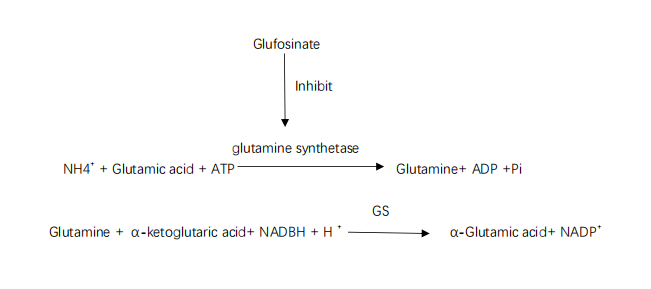Deciphering the Agricultural Impact: Glufosinate Ammonium's Unique Mode of Action Explored
Glufosinate-Ammonium, as a broad-spectrum herbicide, has gained widespread application in agricultural production with the continuous development of agricultural technology. Its unique mechanism of action, particularly the inhibition of glutamine synthetase, has captured attention. This article delves into the working mechanism of Glufosinate-Ammonium, emphasizing its correlation with plant growth and the implications of this mechanism on agricultural practices.
Introduction:
Glufosinate-Ammonium, created by the German company Hoechst, is an organic phosphorus non-systemic herbicide with the active ingredient phosphinothricin (PPT), chemically known as (RS)-2-amino-4-(hydroxymethylphosphinyl) butanoic acid ammonium. Glufosinate-Ammonium exists as a racemic mixture, with only L-PPT exhibiting plant toxicity. Its target enzyme is glutamine synthetase (GS). Summarizing and studying its characteristics is crucial for minimizing side effects and optimizing the utilization of Glufosinate-Ammonium.
Glufosinate-Ammonium Mode Of Action:
Application and Challenges in Agricultural Practices:Glufosinate-Ammonium's target enzyme, glutamine synthetase (GS), plays a role in nitrogen metabolism in plants, acting as a crucial detoxifying enzyme. It neutralizes the toxicity of ammonium released during nitrate reduction, amino acid degradation, and photorespiration. After treatment with PPT, GS undergoes inhibition as phosphorylated PPT occupies eight reactive centers of the GS molecule, altering its spatial configuration and suppressing its activity. This inhibition disrupts nitrogen metabolism in plants, leading to ammonium accumulation, chloroplast disintegration, inhibited photosynthesis, and eventual plant death. Glufosinate-Ammonium also affects insects and animals by inhibiting glutamine synthetase, causing metabolic disruption and neurotoxic effects.

1. Application Prospects:
1.1 Herbicidal Effect
Glufosinate-Ammonium, registered since 1984 in Japan and gradually worldwide, demonstrates effective control of both annual and perennial weeds. Known by commercial names like Basta, Rely, Finale, Challenge, and Liberty, it offers high activity, low toxicity, and environmental compatibility. Research indicates effective control at 0.40 kg/ha for annual weeds and 1.00–2.00 kg/ha for perennial weeds, showcasing its versatility.
1.2 Genetically Modified Crop Application
Transgenic crops resistant to Glufosinate-Ammonium provide a new tool for agriculture. The successful development of transgenic crops without cloning herbicide-resistant genes, using antibiotic-resistant genes as reporter genes, has been achieved. These transgenic plants exhibit resistance levels 4–15 times higher than normal concentrations, offering a valuable approach for weed control.
1.3 Insecticidal and Fungicidal Activity
Research suggests Glufosinate-Ammonium possesses insecticidal activity. Studies on transgenic rice show that after spraying a certain amount of Glufosinate-Ammonium, feeding caterpillars results in their death. Inhibition of GS activity confirms the impact on nitrogen metabolism, indicating potential insecticidal properties.
Conclusion:
In concluding the exploration of Glufosinate-Ammonium's agricultural application and potential challenges, a comprehensive discussion on its impact on agricultural practices and potential future issues is warranted. The herbicide presents a robust tool for increasing crop yields and effectively controlling weeds. However, challenges such as limited efficacy against certain perennial weeds, potential water pollution due to its leaching characteristics, and resistance gene drift in transgenic crops need consideration.
Furthermore, the application of transgenic technology opens new possibilities, but addressing issues like gene drift is essential. Future research should focus on synthesizing Glufosinate-Ammonium more cost-effectively, refining resistance gene applications, and regulating production and usage. Scientific and sustainable management is crucial to maximize benefits and mitigate potential drawbacks, ensuring Glufosinate-Ammonium plays a positive role in agriculture.
Latest News
Contact Us

Name: Kim Gong
Tel: +86-15150222860 , +86-18015677881
E-mail: [email protected]
Skype: kim.gong
QQ: 326296678
WeChat: +8615150222860
Whatsapp: +8615150222860
Add: No.268, Jingang Road, Zhangjiagang Free Trade Zone, Zhangjiagang City, Jiangsu Province, China
 CHINESE
CHINESE ENGLISH
ENGLISH




 Skype Chat
Skype Chat WhatsApp
WhatsApp  Mail inquiry
Mail inquiry QQ online
QQ online
